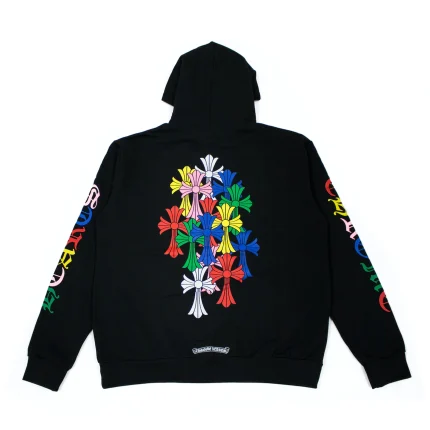Living in a small space often feels like a challenge—especially when it comes to creating a sense of openness and comfort without clutter. Many homeowners think that they need to expand physically to make a room feel bigger, but the secret often lies in smart design tricks. One of the most underrated yet powerful ways to transform a compact room is through wall hanging decorations.
From mirrors that bounce light to tapestries that add depth, wall hangings can work wonders in making a space appear larger, airier, and more inviting. This article explores creative strategies, styles, and practical tips on how wall hanging decorations can visually expand your interiors.
Why Small Spaces Feel Cramped
Before diving into solutions, it’s important to understand why small spaces often feel smaller than they actually are. Factors include:
- Limited natural light: Dark corners create the illusion of confinement.
- Overcrowded furniture: Heavy, bulky items dominate floor space.
- Bare walls: Empty walls can make a room look stark and boxy.
- Clutter: Too many objects shrink a room’s perceived size.
Wall decorations address all these issues by using vertical surfaces to enhance height, reflect light, and draw the eye upward, making the space feel bigger without physically altering it.
The Power of Wall Hanging Decorations
Wall hangings aren’t just decorative—they’re strategic design elements. By carefully selecting the right pieces, you can:
- Create visual depth – Certain textures and patterns pull the eye inward, tricking it into seeing more space.
- Maximize verticality – Tall wall décor guides the gaze upward, adding a sense of height.
- Reflect and brighten – Reflective wall hangings like mirrors spread light across the room.
- Declutter surfaces – Hanging décor frees up floor and table space, reducing clutter.
Types of Wall Hanging Decorations to Make Spaces Feel Bigger
1. Mirrors: The Ultimate Space Expander
Nothing makes a room look larger and brighter than a strategically placed mirror. Large wall mirrors reflect both natural and artificial light, creating the illusion of a more open room.
- Tip: Place a mirror opposite a window to double the light.
- Design idea: Use a gallery of smaller mirrors in different shapes for both function and style.
2. Tapestries and Fabric Art
Wall tapestries add warmth and texture, giving depth without taking up space. Lightweight fabrics with vertical or geometric patterns elongate walls and visually stretch the room.
- Tip: Choose light-colored fabrics for airy vibes.
- Design idea: Hang a floor-to-ceiling tapestry to emphasize height.
3. Floating Shelves
While functional, floating shelves double as wall art. By storing books, plants, or curated décor vertically, you avoid overcrowding the floor.
- Tip: Stick to minimalistic styling to prevent visual heaviness.
- Design idea: Stagger shelves to add dimension and movement.
4. Wall Plants and Hanging Planters
Bringing greenery into your walls not only saves space but also adds freshness. Vertical gardens or hanging planters draw attention upward, making ceilings appear higher.
- Tip: Choose trailing plants like pothos for an elegant cascading effect.
- Design idea: Use geometric plant holders for a modern touch.
5. Wall Art and Frames
A thoughtfully arranged gallery wall gives personality without cluttering surfaces. Opt for oversized art pieces instead of many tiny ones to avoid visual busyness.
- Tip: Hang artwork slightly higher to elongate walls.
- Design idea: Use thin frames in neutral colors to keep the look light.
6. Macramé and Woven Wall Hangings
Textile wall hangings like macramé add bohemian charm while also emphasizing vertical space. Their airy patterns avoid heaviness, keeping the room open.
- Tip: Go for longer designs that hang low for height illusion.
- Design idea: Pair with natural materials like wood or rattan.
7. Functional Wall Décor
Think outside the box—hooks, pegboards, and organizers can act as décor while freeing up floor space. This is especially useful in tiny apartments or studio setups.
- Tip: Choose stylish, color-coordinated hooks.
- Design idea: Display hats, bags, or jewelry as wall art.
Design Principles for Using Wall Hangings in Small Spaces
Decorating with wall hangings is more than just putting something pretty on the wall. To truly enlarge the feel of a small room, keep these design principles in mind:
1. Scale Matters
Oversized wall décor can overpower, while too many small pieces look cluttered. Striking a balance is key.
- Large mirrors or tapestries work best as single statement pieces.
- Small items can be grouped strategically into cohesive gallery walls.
2. Color Psychology
Light, neutral tones create openness. Dark colors absorb light and can shrink a space visually.
- Stick to whites, creams, pastels, or soft metallics.
- Add small pops of color for personality without overwhelming.
3. Symmetry and Alignment
A messy wall arrangement makes rooms feel chaotic and smaller. Neat, symmetrical placement creates order and the perception of spaciousness.
- Align frames in a grid or balanced arrangement.
- Keep wall décor centered and proportional to furniture.
4. Vertical Emphasis
Drawing the eye upward elongates walls and reduces the “boxy” feel.
- Use tall wall art or long hangings.
- Install vertical shelving instead of wide, bulky units.
5. Minimalism Is Key
Small spaces thrive on the “less is more” philosophy. Every wall hanging should serve a purpose—whether to add light, texture, or storage.
Practical Tips for Placement
- Living Room: A mirror above the sofa or a tapestry behind it can open the space.
- Bedroom: Hang artwork above the bed for a focal point without cluttering side tables.
- Dining Area: Use reflective wall art to brighten the dining nook.
- Entryway: A mirror near the door makes narrow hallways appear wider.
Mistakes to Avoid
- Overcrowding the Walls – Too many decorations can overwhelm.
- Ignoring Proportion – Small pieces on a large wall may look lost.
- Dark, Heavy Frames – They weigh down the décor visually.
- Hanging Too Low – Wall hangings should generally be at eye level or higher for height illusion.
Real-Life Inspirations
- Scandinavian Style: Minimalist floating shelves with plants and light wood frames.
- Bohemian Style: Macramé hangings, tapestries, and woven baskets.
- Modern Luxe: Oversized mirrors with metallic frames for brightness and glam.
- Rustic Charm: Wooden wall hangings, vintage signs, and natural textiles.
Why Wall Hangings Are a Smart Investment
Unlike furniture, wall décor is lightweight, flexible, and affordable. It’s easy to switch out pieces with the seasons or as your taste evolves. For renters especially, wall hangings provide a non-permanent way to customize and expand their living space without renovations.
Final Thoughts
Small spaces don’t have to feel cramped or limiting. With the right wall hanging decorations, you can maximize height, reflect light, add texture, and free up valuable floor space. From mirrors to tapestries, wall plants to floating shelves, every choice can play a role in visually enlarging your room.
Remember: the goal isn’t to fill every inch of wall space but to use décor strategically to create balance, brightness, and flow. When done thoughtfully, wall hangings can transform even the tiniest room into a cozy, open, and stylish sanctuary.




